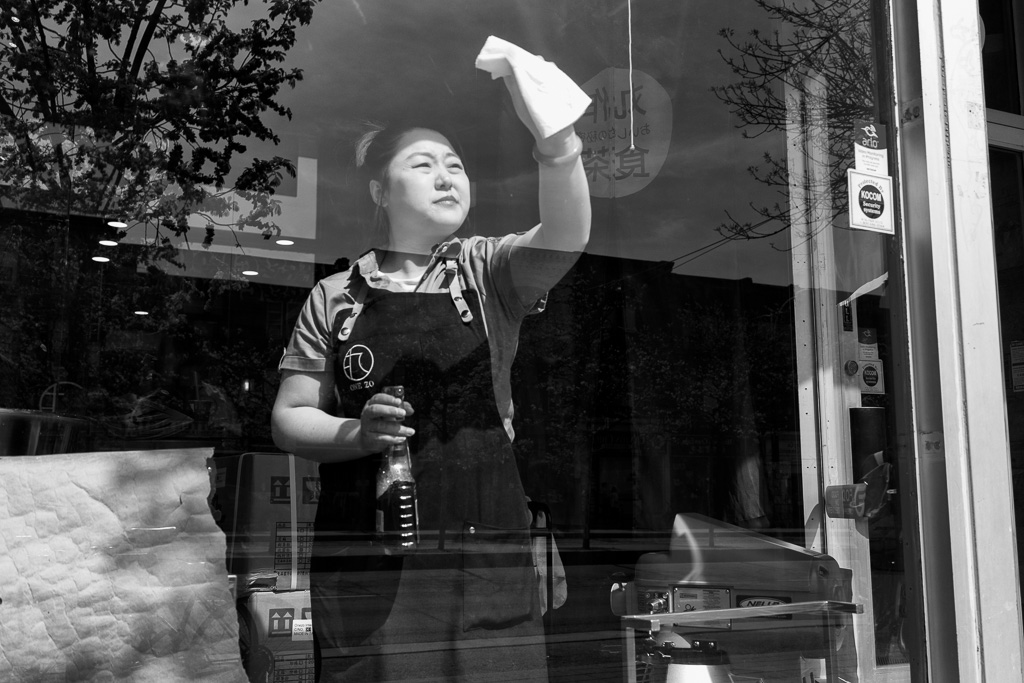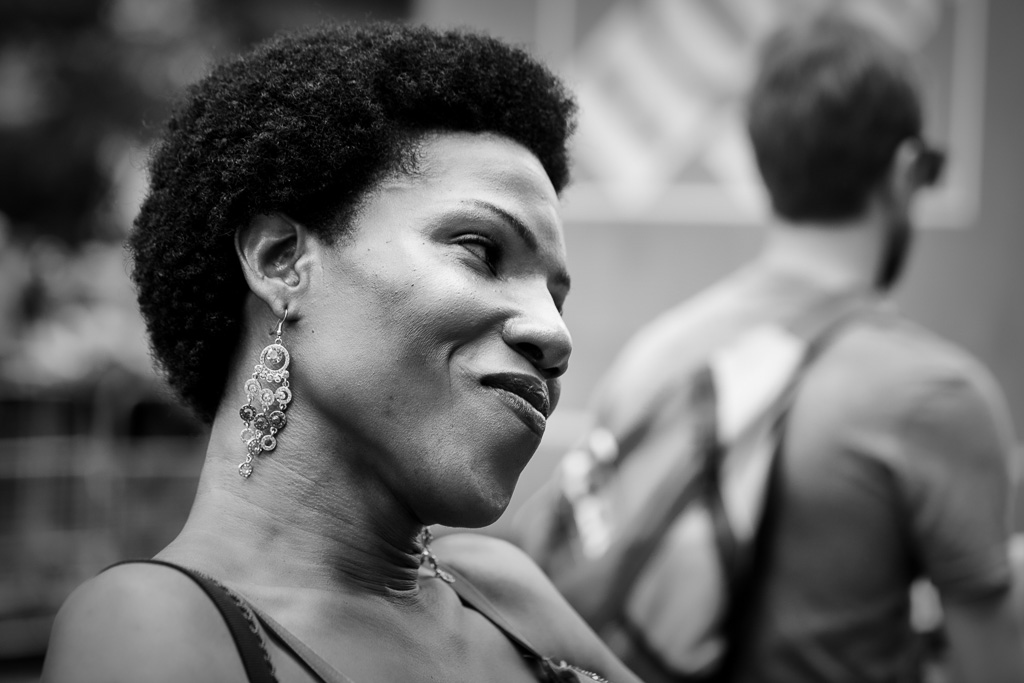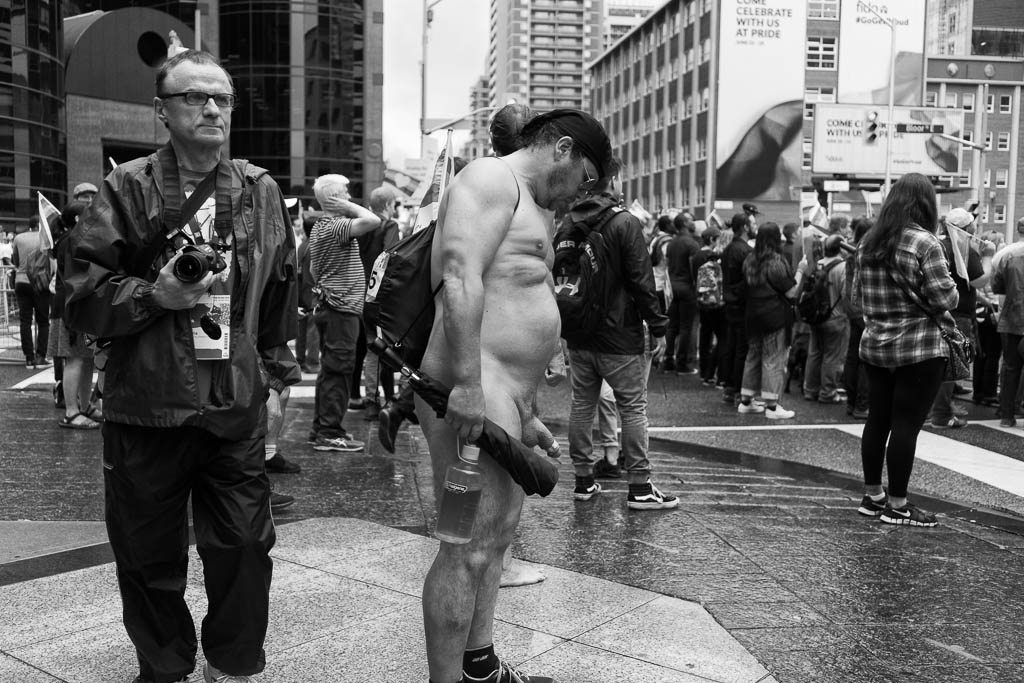
Shooting street photography, I feel a tension between shooting from the front and shooting from the back. This tension has its correlate in the wider world of social relations. Most of us are conflict averse and would rather not face people head-on even though we know we should. Maybe somebody slights us and we feel we ought to stand up to them. It’s a matter of principle. It’s a matter of personal dignity. But when the time comes, we feel nervous. We hesitate and the moment passes.
Something similar happens with a camera in hand. We know that, at least in street photography, the best images happen when the subject approaches us. We get to look them in the eyes and examine their expression. If we shoot them from the back, it’s only because we’re cowardly. We tell ourselves we haven’t got the right stuff. Our inner critic yammers on until it makes us feel two inches tall and we wonder if we’ll ever be any good at our chosen craft.
And yet, as with any rule-bound practice, we discover that the rules take us only so far. There are occasions when it’s best to break the rules. Sometimes the view from the back offers its own interest, as it does here with the hand pressed to the hip, the posture of discomfort, the four rings on the left hand, the rumpled texture of the shirt. The scene from the back raises enough questions in its own right to sustain our interest.
I find the same situation arises with buildings. The front of a building has an obvious interest. But sometimes, the back of a building tells a story all its own and I would miss that story if I didn’t duck around the side and explore what lies behind.















